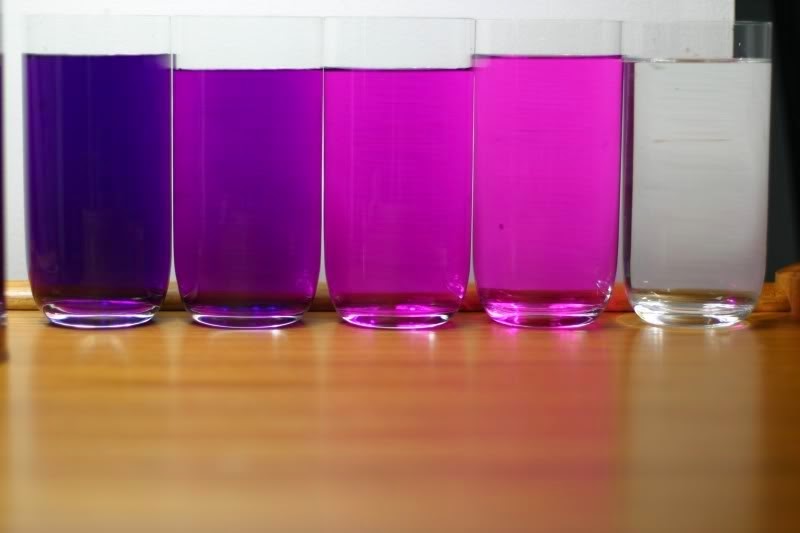PARTICULATE NATURE OF MATTER
Matter – is anything that occupies space and has mass. Matter exists in three states namely; solid, liquid and gas.
Experiment
Aim: to demonstrate that matter is made up of smaller particles
Apparatus: Beakers, potassium permanganate crystals, water.
Procedure
- Pour water into the beaker till it is half full
- Dissolve some potassium permanganate crystals until the solution is purple
- Transfer half the solution into another beaker and fill it with water
- Continue the process with other beakers, comparing the colour of the solution through each dilution.
Observation
 |
|
The colour of the solution fades away through each dilution until the solution appears colourless.
This shows that the particles of potassium permanganate are spread out evenly in the water. Each dilution spreads them out further as the water molecules increase in number. Hence the purple colour fades away with each dilution until it becomes colourless.
Conclusion
Potassium permanganate is made up of tiny particles.
Also, when some salt particles are put in a flask and water added, it is observed that after shaking the flask to dissolve the salt, the volume of the final solution is less than the original volume of the water plus undissolved salt. This is because salt particles fitted into some spaces between the water molecules. Hence the particles of the solution are more packed together, reducing the volume of the solution. This also indicates that the particles of water and those of salt differ in size.